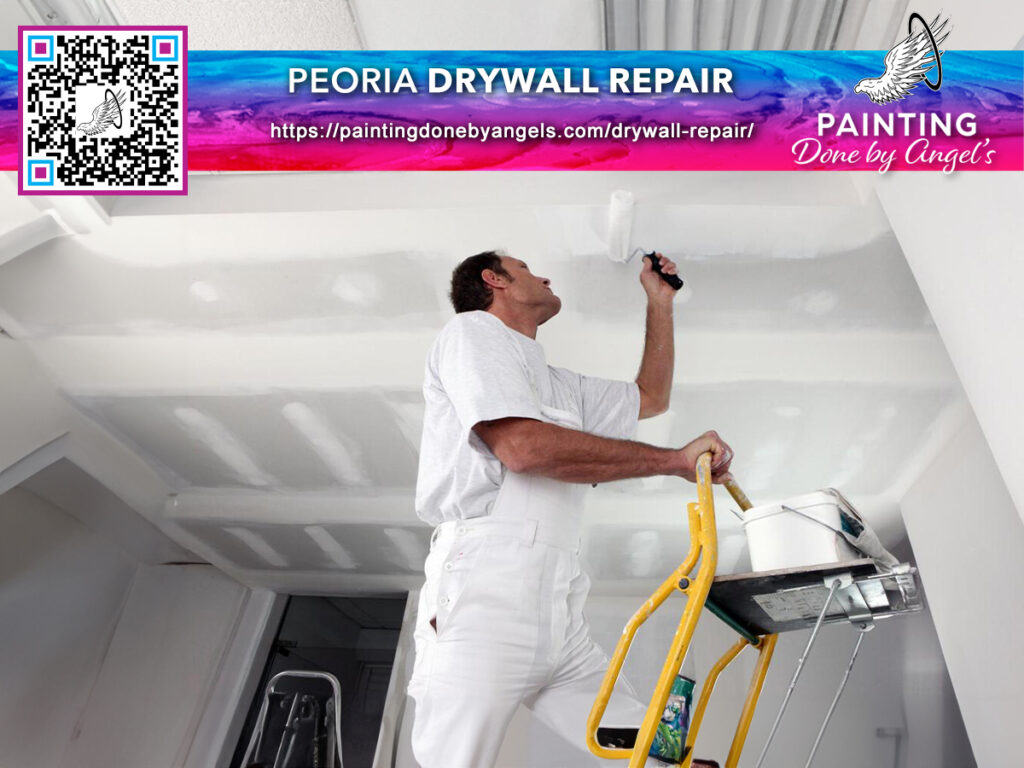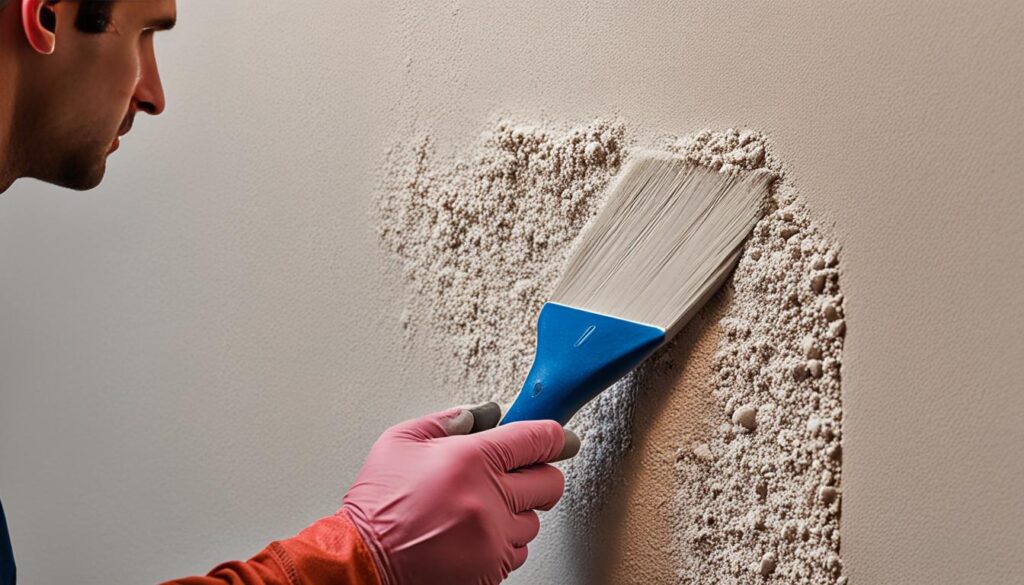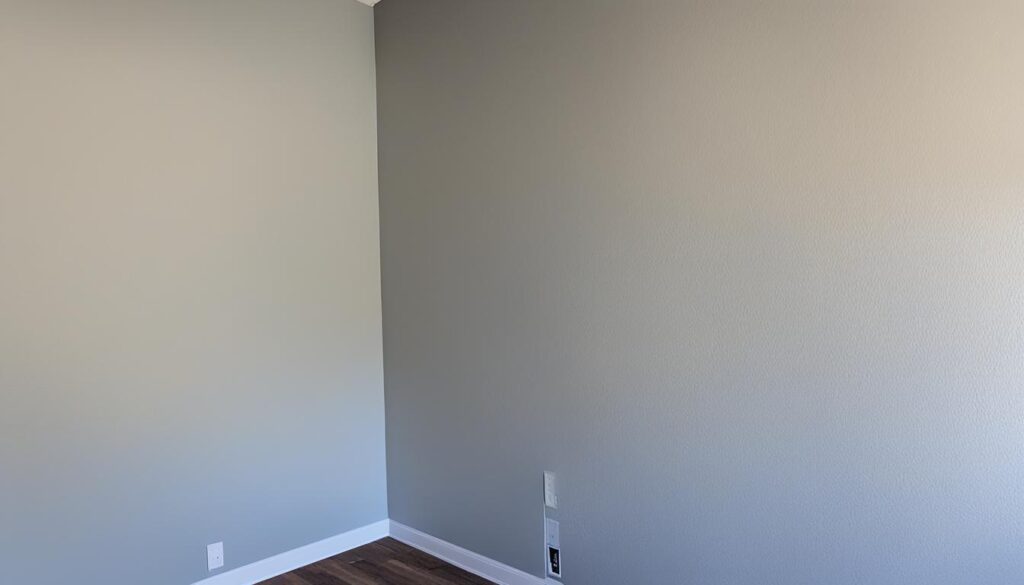
Drywall issues in your Peoria home can range from minor scratches to major holes. When faced with these challenges, it’s important to understand how plaster repair complements drywall repair in Peoria. While drywall is commonly used in modern construction, older homes often feature plaster walls that require specialized attention. By knowing how to address both types of materials, homeowners in Peoria can ensure their walls are properly restored and maintained.
Key Takeaways:
- Plaster Repair and Drywall Repair Differences: Understanding the distinctions between plaster and drywall repair is crucial for effective restoration.
- Complementary Techniques: Plaster repair complements drywall repair by offering specialized solutions for restoring plaster walls.
- Surface Preparation: Proper surface preparation is vital for both plaster and drywall repair to ensure a seamless finish.
- Professional Expertise: Hiring professionals with experience in plaster and drywall repair can guarantee high-quality results.
- Enhanced Aesthetic Appeal: Combining plaster and drywall repair techniques can result in a visually appealing and durable wall surface in Peoria, AZ.

Understanding Plaster and Drywall
Composition and Characteristics of Plaster Walls
Some of the oldest interior wall surfaces in buildings are made of plaster. Plaster is a mixture of lime, sand, and water that can be applied in multiple layers to create a smooth and durable wall surface. These walls are known for their strength and soundproofing properties, making them a popular choice in older homes and historic buildings.
Composition and Characteristics of Drywall
Understanding the composition and characteristics of drywall is important when it comes to home construction and repair. Drywall, also known as gypsum board or wallboard, is made of gypsum plaster sandwiched between two layers of thick paper. Any damage to drywall, such as cracks, holes, or water damage, can compromise the structural integrity of the wall and lead to further issues if left unaddressed.
Plus, drywall repair is crucial for maintaining the aesthetics and functionality of your home. Ignoring drywall damage can lead to mold growth, pest infestation, and even structural instability. It is important to address any issues with drywall promptly to prevent further damage and ensure the longevity of your walls.
Common Issues with Plaster and Drywall in Peoria, AZ
Weather-related Factors
With the extreme heat and occasional monsoon storms in Peoria, AZ, plaster and drywall are subjected to various weather-related issues. The intense heat can cause plaster to crack and drywall seams to expand, leading to visible damage. Additionally, sudden heavy rains during monsoon season can result in water damage, causing soft spots in plaster and mold growth on drywall.
- Cracking of plaster due to heat
- Expansion of drywall seams during monsoon storms
- Water damage leads to soft spots and mold growth
The proper repair and maintenance of plaster and drywall in Peoria, AZ is vital to prevent further damage and ensure the longevity of your walls. The sooner these weather-related issues are addressed, the better the chance of avoiding costly repairs in the future.
Age and Structural Problems
Drywall in older homes in Peoria, AZ may be prone to age-related deterioration and structural issues. Over time, the materials can weaken, leading to cracks, holes, and sagging walls. These structural problems not only affect the aesthetics of your home but also compromise its safety and stability.
Problems with plaster and drywall in Peoria, AZ should not be ignored, as they can indicate underlying issues that need to be addressed promptly. Whether it’s repairing cracks and holes or reinforcing weakened areas, seeking professional help is crucial to ensure the structural integrity of your walls. Gain deeper insights into How Professional Painting Companies Transform Home Exteriors.
Steps in Plaster Repair
Assessing the Damage
Keep in mind that accurate assessment is crucial when it comes to plaster repair. Inspecting the damaged area thoroughly will help you determine the extent of the damage and the best course of action to take. Look for cracks, holes, or areas where the plaster has become loose or detached from the wall.
An inadequate assessment may result in incomplete repairs, leading to recurring issues in the future. If you are uncertain about the severity of the damage, it’s advisable to consult a professional for a more detailed evaluation.
Preparation and Cleaning
Assessing the condition of the surface before starting the repair is crucial. Ensure that the area is clean and free of any loose plaster, dust, or debris. This will help the new plaster adhere properly to the wall and result in a more durable repair.
Preparation also involves identifying any underlying issues that may have caused the damage, such as water leaks or structural problems. Addressing these issues before applying the plaster will prevent future damage and ensure the longevity of the repair.
Assessing the condition of the surface before starting the repair is crucial to ensure a successful outcome.
Application of Plaster
For small cracks or holes, applying a layer of plaster with a putty knife can effectively repair the damaged area. Make sure to feather the edges of the new plaster to blend it seamlessly with the surrounding surface. Allow the plaster to dry completely before proceeding to the next step.
For larger areas or more extensive damage, multiple layers of plaster may be necessary. Each layer should be applied thinly and allowed to dry before adding the next layer. Sanding the dried plaster between layers will help achieve a smooth finish.
For larger areas or more extensive damage, multiple layers of plaster may be necessary to ensure a durable and seamless repair.
Sanding and Finishing
After the plaster has dried completely, sand the repaired area with fine-grit sandpaper to smooth out any imperfections. Take care to blend the edges of the repaired area with the surrounding wall for a seamless finish. Wipe away any dust resulting from sanding before applying a primer and new paint to match the existing wall.
Understanding the proper techniques for sanding and finishing the repaired area will ensure a professional-looking result that seamlessly integrates with the rest of the wall.
Steps in Drywall Repair
Identifying the Type of Drywall Damage
Type All drywall damage is not created equal, and it’s crucial to identify the type of damage before proceeding with repairs. Common types of damage include dents, cracks, holes, and water damage. Dents are usually caused by impact, while cracks can be a result of settling or temperature changes. Holes may be from hanging fixtures or accidental bumps, and water damage can occur from leaks or flooding.
Tools and Materials Needed for Repair
Steps Before starting a drywall repair project, it’s vital to gather the necessary tools and materials. Some of the tools you might need include a putty knife, drywall compound, sandpaper, a utility knife, a sanding block, and a paintbrush. Additionally, you may require a drywall patch, primer, and paint to finish the repair seamlessly.
Having the right tools and materials on hand will ensure that the repair process runs smoothly and efficiently, resulting in a professional-looking finish.
Patching and Sanding Techniques
Repair Patching drywall involves filling in the damaged area with drywall compound and smoothing it out with a putty knife. Once the compound is dry, sanding is necessary to create a seamless surface. Sanding helps to blend the patched area with the rest of the wall, ensuring a uniform finish.
Priming and Painting
Drywall Once the patched and sanded area is smooth and level with the rest of the wall, it’s time to prime and paint. Priming is vital to ensure that the paint adheres properly and provides a consistent finish. After priming, apply a coat of paint that matches the rest of the wall to complete the repair.
By following these steps in drywall repair, you can effectively address various types of damage and restore the integrity and appearance of your walls.

Complementary Techniques for Plaster and Drywall Repair
Blending Repaired Areas with Existing Structures
To ensure a seamless repair job, it is crucial to blend the repaired areas with the existing structures. Any noticeable differences in color, texture, or sheen can detract from the overall aesthetics of the space. One effective technique is to feather the edges of the repaired area by gradually tapering the new plaster or joint compound into the surrounding surface. This gradual blending helps to create a smooth transition between the repaired and existing areas.
Managing Textural Differences between Plaster and Drywall
Differences in texture between plaster and drywall can pose a challenge when repairing walls or ceilings. While plaster has a smooth and dense finish, drywall tends to have a more porous and uneven surface. To address this issue, it is imperative to use techniques that help to manage these textural differences. One approach is to apply a primer or sealer to the repaired areas before painting. This helps to create a uniform surface and minimizes the appearance of textural discrepancies.
Managing textural differences between plaster and drywall requires attention to detail and a thorough understanding of the materials involved. By utilizing the right techniques and products, professionals can achieve a high-quality repair that seamlessly integrates with the existing structures.
Preventative Measures and Maintenance Tips
Once again, when it comes to maintaining the integrity of your walls, plaster repair and drywall repair in Peoria, AZ goes hand in hand. To ensure the longevity of your walls and prevent costly repairs down the line, it is crucial to implement preventative measures and regular maintenance.
Regular Inspections and Upkeep
For optimal wall health, it is crucial to conduct regular inspections of both your plaster and drywall. Look out for any signs of cracks, holes, or water damage. Addressing these issues promptly can prevent them from escalating into more significant problems. Additionally, keeping an eye on the condition of your walls allows you to identify any potential issues early on, saving you time and money in the long run.
Best Practices for Longevity of Plaster and Drywall
Maintenance is key to extending the lifespan of your walls. Incorporating best practices for the care of both plaster and drywall can help maintain their structural integrity. Practices such as keeping your walls clean and well-maintained, avoiding excessive moisture exposure, and promptly addressing any damages can significantly impact their longevity.
By following these best practices and implementing regular inspections and upkeep, you can ensure that your walls remain in top condition for years to come. Note, that prevention is always better than cure when it comes to wall maintenance.
After implementing these maintenance tips, you can rest assured that your walls are in the best possible condition, protected from potential damage and deterioration.
Final Words
Summing up, plaster repair and drywall repair are both vital services for maintaining the structural integrity and aesthetic appeal of a property in Peoria, AZ. While drywall is commonly used in modern construction, plaster is still found in many older homes and buildings in the area. By understanding how plaster repair and drywall repair complement each other, homeowners and property owners can ensure that their walls are properly maintained and restored, regardless of the material used. Whether it’s patching up a hole in drywall or restoring a historic plaster wall, professional repair services can help preserve the beauty and functionality of any space.
We at Painting Done by Angel’s are committed to helping those in the Scottsdale & Phoenix, Arizona region make their homes and businesses beautiful. We offer interior and exterior painting solutions with more than 15 years of expertise. Because our family-owned and operated team is bonded, insured, and certified, you can rest assured that your investment is safe and secure with us. As a result, we take great pride in delivering the best results for our customers every time!
